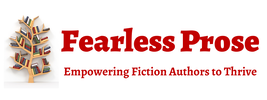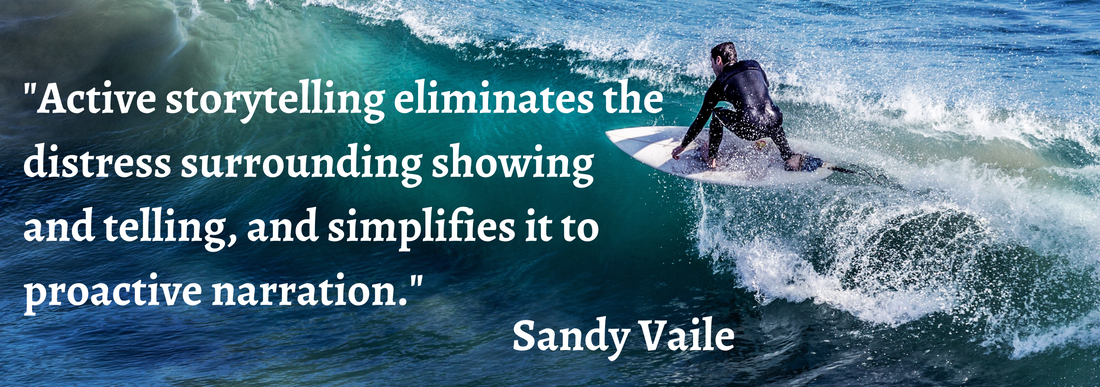|
Author: Sandy Vaile Previously published on the Writers in the Storm blog on 3rd August 2023. Dialogue in fiction stories is a reliable way of bringing characters to life and immersing readers in their lives, but for it to be effective, it needs to be understood. As Michel de Montaigne said in his essay, On the Art of Conversation, The most fruitful and natural exercise of the mind … is conversation.” It stimulates thinking, engages facial expressions and has the magic to convey complex ideas to others. In fact, we were communicating verbally long before we decided to write down ideas. Engaging conversations that add value to narration, need to:
Dialogue doesn’t include private thoughts, dreams or narration. Make it clear who is speakingIt’s important that readers can easily determine who is speaking, so they can follow the conversation and don’t get the wrong impression of what’s going on in the story. Ambiguity can lead to misinterpretation, but this can be prevented by:
Continue reading ...
2 Comments
Author: Sandy Vaile First published in Hearts Talk ezine in August 2023 How to write character thoughts without irritating readersOne way to bring readers closer to fictional characters is to get inside their heads and show their thoughts, to provide intimacy and insight to readers. But is the only way to do this to italicise them? If not, what other options are available to authors?
Formatting internal thoughts in fiction is a subject that causes a great deal of confusion. It raises so many questions like: Should you differentiate thoughts from the rest of the narrative? If so, how? And if you don’t use direct thoughts, will it distance readers? In this article we’re going to explore:
Author: Sandy Vaile
Originally published on the Writers In The Storm blog, 8th February 2023 Too often I see authors enthusiastically start writing a novel, only to run out of steam part way through. In fact, only 30% of people who start writing a novel will actually finish it. It’s heartbreaking when a fantastic concept languishes in the bottom drawer forever. Why does this happen? You could be writing a shiny, exciting idea that doesn’t have the substance to support an entire book. A lot of this hinges on the main character, and doesn’t matter if you prefer to plot or discover your way into a story. A story’s rock-solid foundation comes from knowing who the main character is and what their journey through the story looks like, especially their motivations and “why” everything happens, which provides readers with a deeper understanding of the story as a whole. This clarity turns your awesome idea into something tangible and purposeful. Today, I want to explore the very inception of a story and how we can shape those initial ideas into a tale we are passionate to tell. Author: Sandy Vaile
Originally published in Hearts Talk eZine's March edition 2023 Creating compelling backstory is essential for developing rich well-rounded characters that capture the interest of readers. However, the wrong backstory can turn into an information dump that slows a story’s pace to a yawn. Read on to find out how to create backstory that is relevant to the plot, so it won’t detract from what’s important: the story. It’s not enough to know everything about a character’s past, like where they went to school and what kind of cake they had at their 10th birthday party. While documenting your character’s entire life might be fun (for some) and knowing it certainly enables you to have a comprehensive understanding of who they are and where they came from, a lot of it won’t be relevant to the book you’re writing. Say what? Authors get chastised for information dumping when readers don’t see the relevance of the information. You can’t just throw information at the wall to see what sticks. Backstory must be:
But how can you make it so? Author: Sandy Vaile Previously published on the Romance Writers of Australia blog 23/08/22 ‘Show don’t tell’ is one of the most worrisome writing guidelines ever created, but it’s also essential to modern authors. Finding the right balance of showing and telling in your story is like patting your head and rubbing your belly while balancing on one leg at the top of a pole in a river full of crocodiles. (And I never exaggerate.) Authors get themselves tied up in knots over how much to show and where to tell. It's painful to watch. But there is good news. Take a deep breath, let go of the minutiae that is bogging you down and remember one simple and liberating concept, and you’ll be on your way to mastering this tricky business. The One Showing Concept You Need to KnowACTIVE STORYTELLING
This concept is so simple you’ll wonder why the ultimatum of ‘show don’t tell’ was ever given. |
Fearless ProseEmpowering aspiring authors to confidently write novels they're proud to publish Categories
All
Archives
May 2024
|
© Sandy Vaile 2012-2024 |
Contact and Privacy Policy - About Sandy |






 RSS Feed
RSS Feed